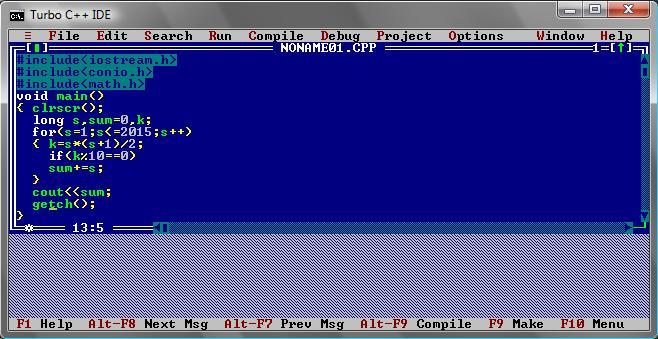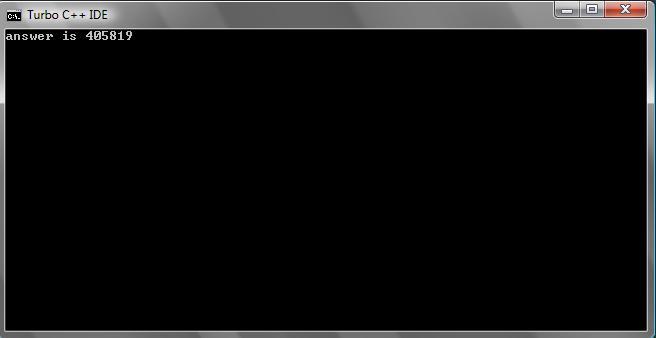Look like a flower but be the serpent underneath
Take a look at this:
1 . 1 2 . 1 3 . 1 4 . 1 5 . 1 . . . 1 . 2 2 . 2 3 . 2 4 . 2 5 . 2 . . . 1 . 3 2 . 3 3 . 3 4 . 3 5 . 3 . . . 1 . 4 2 . 4 3 . 4 4 . 4 5 . 4 . . . 1 . 5 2 . 5 3 . 5 4 . 5 5 . 5 . . . . . . . . . . . . . . . . . . . . .
Now, let
a 1 = 1 . 1 , a 2 = 2 . 1 , a 3 = 1 . 2 a 4 = 3 . 1 , a 5 = 2 . 2 , a 6 = 1 . 3 a 7 = 4 . 1 , a 8 = 3 . 2 , a 9 = 2 . 3 . . .
k = 2 n ( n − 1 ) + 1 ∑ 2 ( n ) ( n + 1 ) a k = S ( n )
0 < n ≤ 2 0 1 5
Find the sum of all the values of integer n such that S ( n ) is an integer.
Try my Other Problems
The answer is 405819.
This section requires Javascript.
You are seeing this because something didn't load right. We suggest you, (a) try
refreshing the page, (b) enabling javascript if it is disabled on your browser and,
finally, (c)
loading the
non-javascript version of this page
. We're sorry about the hassle.
2 solutions
Good problem and solution.Is this problem original ?
Log in to reply
Yes it is.
Log in to reply
How do we know terms are in the form of, for example, 12.1 vs. 11.11? You didn't give a statement about the larger cases and how they are displayed.
Log in to reply
@Jaleb Jay – Yeah that's a point. It wasn't exactly clear from the question of the scenarios arising with larger numbers, just as you mentioned above. Must be clarified in the question.
I think there is an error in your formula for S ( n ) . For example, if you take n = 1 , then S ( 1 ) = k = 2 ∑ 3 a k = 2 . 1 + 1 . 2 = 3 . 3 = 1 . 1 ⋅ 3 = 1 . 1 T 2 . In general, S ( n ) = 1 . 1 T n + 1 , not 1 . 1 T n .
Log in to reply
I am terribly sorry. I have edited the question. Are you a moderator? Because perhaps you can lower the difficulty for this question.
Log in to reply
Thanks for correcting. I think that Level 5 is about right for this problem.
How do you get the last two conditions, i.e, n = 20a + 15 and n = 20a + 4


Take a look at the summation: k = 2 n ( n − 1 ) + 1 ∑ 2 ( n ) ( n + 1 ) a k = k = T n − 1 + 1 ∑ T n a k Where T n is the n t h triangular number. this makes it easy to understand what the question is asking.
Tilt the matrix such that 1 . 1 becomes the top of the "pyramid" and 2 . 2 , 1 . 2 becomes the second row of the "pyramid" and so on. The summation is just asking for the sum of the terms of the n row.
It can be easily derived that S ( n ) = 1 . 1 k = 1 ∑ n k = 1 . 1 × T n
Which means S ( n ) would not be an integer unless T n is divisible by 1 0 .
This means that n ( n + 1 ) has to be divisible by 2 0
You can further derive that S ( n ) is an integer when n satisfies any of the bellow conditions:
n = ⎩ ⎪ ⎪ ⎨ ⎪ ⎪ ⎧ 2 0 a + 2 0 2 0 a + 1 9 2 0 a + 1 5 2 0 a + 4 ⎭ ⎪ ⎪ ⎬ ⎪ ⎪ ⎫ a ≥ 0 Where a is an integer
So, to find the sum of all the possible values to n :
( a = 0 ∑ 9 9 2 0 a + 2 0 ) + ( a = 0 ∑ 9 9 2 0 a + 1 9 ) + ( a = 0 ∑ 1 0 0 2 0 a + 1 5 ) + ( a = 0 ∑ 1 0 0 2 0 a + 4 ) = 4 0 5 8 1 9